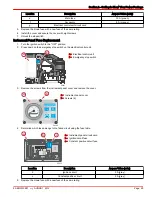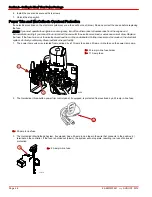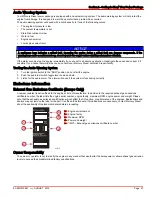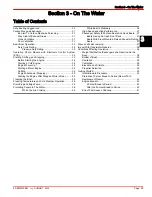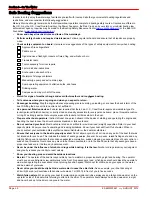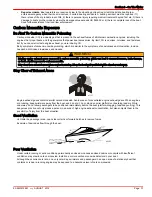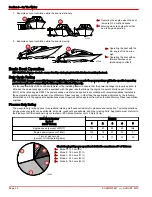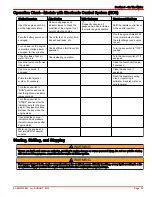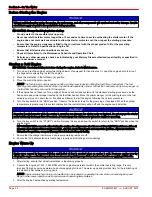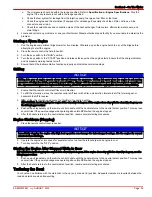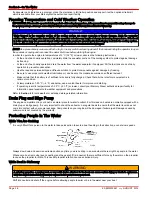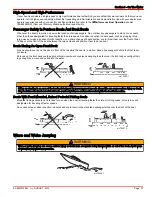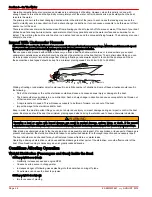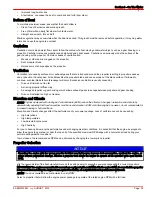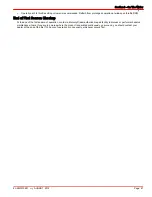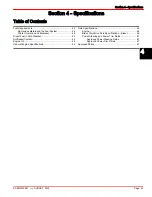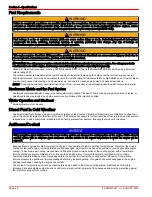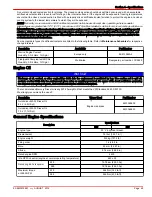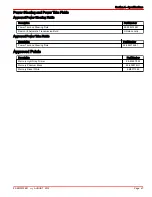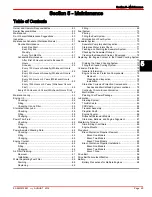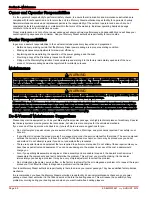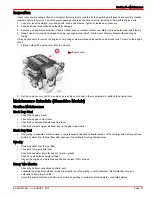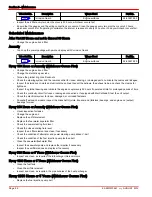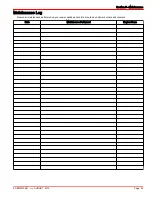
Section 3 - On The Water
Page 38
90-8M0070851
eng
AUGUST 2012
Operating recreational boats over waves and wakes is a natural part of boating. However, when this activity is done with
enough speed to force the boat hull partially or completely out of the water, certain hazards arise, particularly when the boat
re‑enters the water.
The primary concern is the boat changing direction while in the midst of the jump. In such cases the landing may cause the
boat to violently veer in a new direction. Such a sharp change in direction or turn can cause occupants to be thrown out of their
seats or out of the boat.
There is another less common hazardous result from allowing your boat to launch off of a wave or wake. If the bow of your boat
pitches down far enough while airborne, upon water contact it may penetrate under the water surface and submarine for an
instant. This will bring the boat nearly to a stop in an instant and can send the occupants flying forward. The boat may also veer
sharply to one side.
Impact With Underwater Hazards
IMPORTANT: Operating in shallow waters can severely damage the boat or power package. Maintain a minimum safe speed
when operating the vessel in shallow waters or in areas with underwater obstacles.
Reduce speed and proceed with caution whenever you drive a boat in shallow water areas, or in areas where you suspect
underwater obstacles may exist which could be struck by the sterndrive or the boat bottom. The most important thing you can
do to help reduce injury or impact damage from striking a floating or underwater object is to control the boat speed. Under
these conditions, boat speed should be kept to a minimum planing speed 24 to 40 km/h (15 to 25 MPH)
45914
Striking a floating or underwater object could result in an infinite number of situations. Some of these situations could result in
the following:
•
Part of the sterndrive or the entire sterndrive could break loose and cause serious injury or damage to the boat.
•
The boat could move suddenly in a new direction. Such a sharp change in direction can cause occupants to be thrown out
of their seats or out of the boat.
•
A rapid reduction in speed. This will cause occupants to be thrown forward, or even out of the boat.
•
Impact damage to the sterndrive and/or boat.
Keep in mind, the most important thing you can do to help reduce injury or impact damage during an impact is control the boat
speed. Boat speed should be kept to a minimum planing speed when driving in waters known to have underwater obstacles.
!
WARNING
Operating a boat or engine with impact damage can result in product damage, serious injury, or death. If the vessel
experiences any form of impact, have an authorized Mercury Marine dealer inspect and repair the vessel or power package.
After striking a submerged object, stop the engine as soon as possible and inspect it for any broken or loose parts. If damage is
present or suspected, the sterndrive should be taken to an authorized dealer for a thorough inspection and necessary repair.
The boat should also be checked for any hull fractures, transom fractures, or water leaks.
Operating a damaged sterndrive could cause additional damage to other parts of the sterndrive, or could affect control of the
boat. If continued running is necessary, do so at greatly reduced speeds.
Conditions Affecting Operation
Weight Distribution (Passengers and Gear) Inside the Boat
Shifting weight to rear (stern):
•
Generally increases speed and engine RPM
•
Causes bow to bounce in choppy water
•
Increases danger of following wave splashing into the boat when coming off plane
•
At extremes, can cause the boat to porpoise
Shifting weight to front (bow):
•
Improves ease of planing


